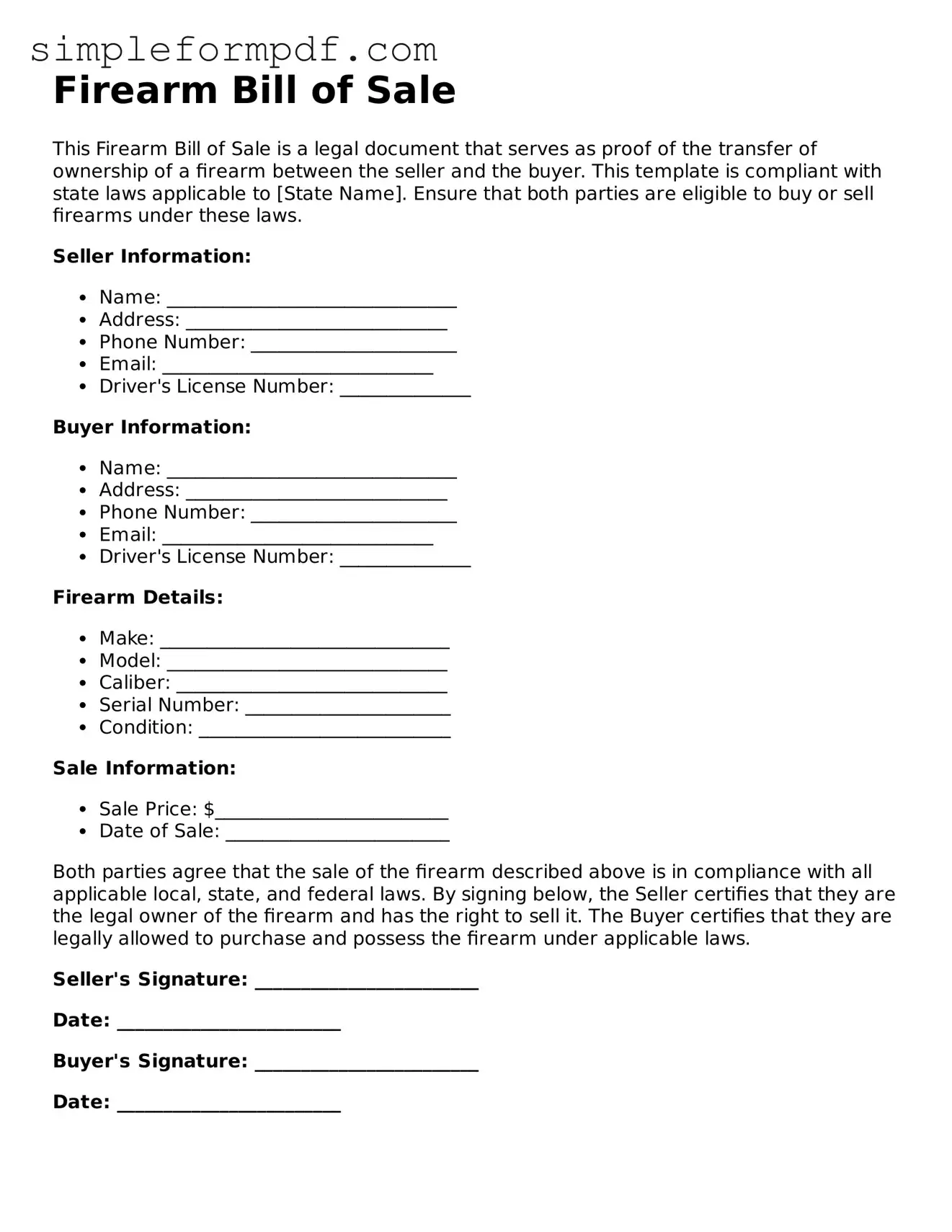Firearm Bill of Sale
This Firearm Bill of Sale is a legal document that serves as proof of the transfer of ownership of a firearm between the seller and the buyer. This template is compliant with state laws applicable to [State Name]. Ensure that both parties are eligible to buy or sell firearms under these laws.
Seller Information:
- Name: _______________________________
- Address: ____________________________
- Phone Number: ______________________
- Email: _____________________________
- Driver's License Number: ______________
Buyer Information:
- Name: _______________________________
- Address: ____________________________
- Phone Number: ______________________
- Email: _____________________________
- Driver's License Number: ______________
Firearm Details:
- Make: _______________________________
- Model: ______________________________
- Caliber: _____________________________
- Serial Number: ______________________
- Condition: ___________________________
Sale Information:
- Sale Price: $_________________________
- Date of Sale: ________________________
Both parties agree that the sale of the firearm described above is in compliance with all applicable local, state, and federal laws. By signing below, the Seller certifies that they are the legal owner of the firearm and has the right to sell it. The Buyer certifies that they are legally allowed to purchase and possess the firearm under applicable laws.
Seller's Signature: ________________________
Date: ________________________
Buyer's Signature: ________________________
Date: ________________________
